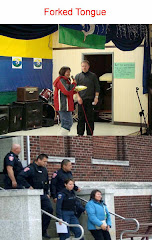Likely yes with sustained annual exploration expenditures in the $600 million range.
Here's what the Australian pointy heads say about what it costs to find a base metal mine.
Discovery costs
Mackenzie et al. (1997) reported that the average cost of finding and delineating an economic base metal deposit was about $120 million ($160 million in 2004–2005 dollars) and almost six times higher than for nickel but varied greatly between regions.
The decline in the rate of discovery of new base metals (excluding nickel) since the early 1990s suggests that the average cost of discovery of base metal deposits in Australia is likely to have increased since Mackenzie et al., (1998) study. Discovery costs have improved for nickel, however. Hronsky and Schodde (2005) estimated that, on average, each nickel sulphide deposit discovered in the Yilgarn Craton cost $17.7 million and nickel laterite deposits $6.5 million. This is substantially less than the $23 million ($31 million in 2004–2005 dollars) reported by Mackenzie et al., 1997 M Hronsky and Schodde (2005) noted that average discovery costs were ‘remarkably cheap’ at 5.2 c/lb ($115/tonne) for nickel sulphide and 0.6 c/lb for laterite nickel.
One fact to keep in mind.
• there is a broad correlation between intensity of exploration and rates of base metal discovery. However, the major peak in mineral exploration activity in the mid-1990s was not accompanied by significant discovery, as noted previously (e.g. Haynes, 2000; Parry and Parry, 2001
Resources Policy
Volume 30, Issue 3, September 2005, Pages 168-185
Exploration and discovery of Australia's copper, nickel, lead and zinc resources 1976–2005
A.L. Jaques M.B. Huleatt, M. Ratajkoski and R.R. Towner
A place for friends of KI First Nation.
Chief Donny Morris

A Quiet Moment on the Land

Follow the Arrow
Chief and Council

Resolved
Forked Tongue

Ontario's Understanding of A Gift
May 26 Rally Blog
Blog Archive
-
▼
2008
(401)
-
▼
June
(43)
- Somebody's Getting Rich in Matawa Territory and it...
- Government of Kitchenuhmaykoosib Inninuwug's Ultim...
- Missanabie Cree Chief Now Platinex/Metalex Negotiator
- Letter to Exploration Managers-How to Notify and S...
- Mining Act Reform and The Fox and Wanlin Show
- BC On Early Notification, Not Early Enuff
- The Politics of Overlaps
- Mindanao Fights the Copper Miners - Philippines
- Grand Theft Congo - DRC
- Mushkegowuk Grand Chief tells it Like it is-No Pro...
- Organizing To Win!
- 3 Demands to Unite Us-Moratorium, Land Use Plannin...
- Municipal Pressure for Mining Reform Grows-Uranium...
- What to Do When Snakes in Suits(Mining Company or...
- Three Days in May (Part 2)
- Three Days in May (Part 1)
- Thoughts of KI Councillor Sam McKay on His Recent ...
- Shabot Obadjiwan discussing consultation with govt...
- Issues at Heart of KI Dispute will be Fundamental ...
- KIs Biggest Political Ally Hangs it Up
- Essence of Ontario's Hype of Mining Exploration fo...
- Influential Economist Magazine on New Aboriginal ...
- With All this Exploration Are we Likely to See any...
- Why I Like Ecuador Mining Reform, Sometimes Having...
- Republic of NANistan?
- How Mining Majors Handle Political Risk-Use a Juni...
- Ecuadorian Indigenous Peoples Ramp Up Right to Say...
- Matawa Mining Deal on Day of National Apology-Bad ...
- All That Attention on Mining Act One of Reasons On...
- Australian's Say Junior Miners May be Set for a Tu...
- First Nation Consultation Could Temper MNDM Hype ...
- NDP Pushes McGuinty to Apologize to KI and Bob Lov...
- Why Muskoka Cottage Owners Will Win Campaign For F...
- Is this Exploration Boom about Investment or Specu...
- Prediction-Court of Appeal Written reasons will Tu...
- New Protest Wave as Ontario Economy Tanks
- Teachings of Bob Lovelace -Building Bridges Betwee...
- Grassy Narrows on CBC As It happens
- Minister Stumbles Yet Again, Handlers Should be Se...
- Grassy Wins Campaign, KI Process Now Needed
- Why KI Will Win and Platinex and Ontario Will Lose
- Time for Bryant to Return to School-His Era of Abo...
- 3 Steps McGuinty Refuses to Take; Respect the Righ...
-
▼
June
(43)
Treaty Defenders

Cecilia, Darryl, Sam, Bruce and Jack
Produced with help from Rainforest Action Network